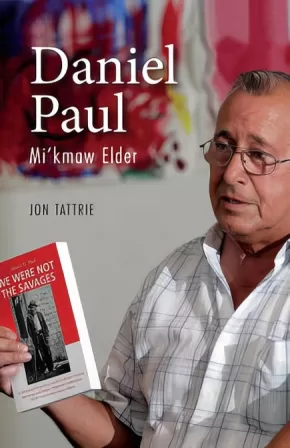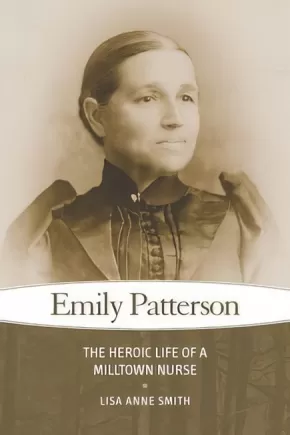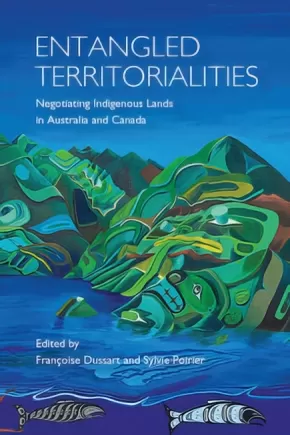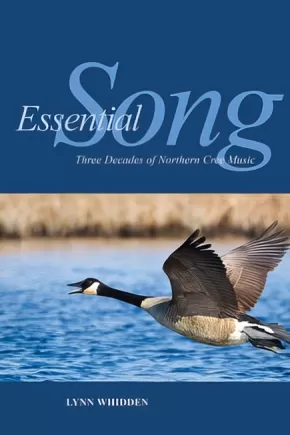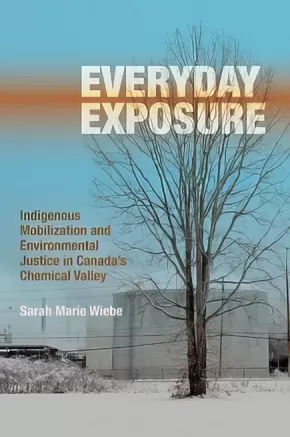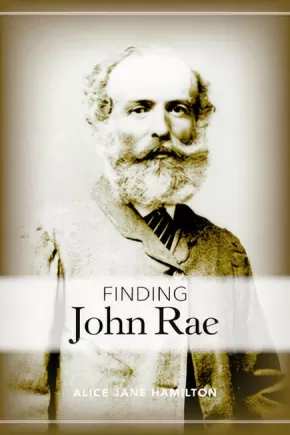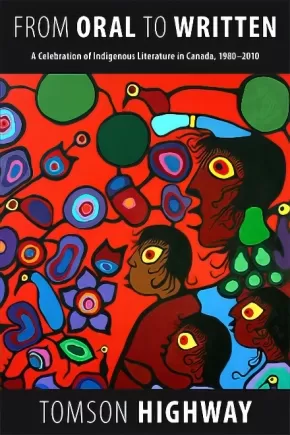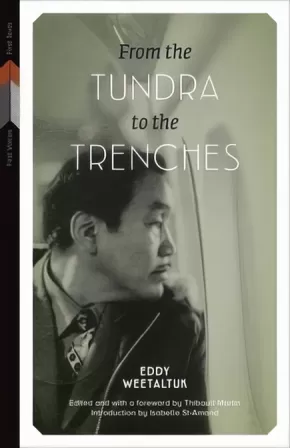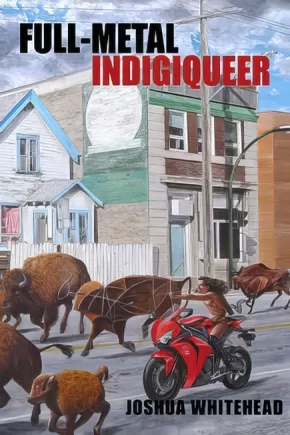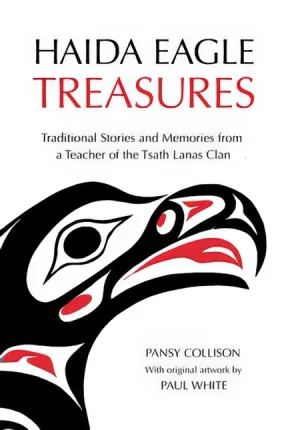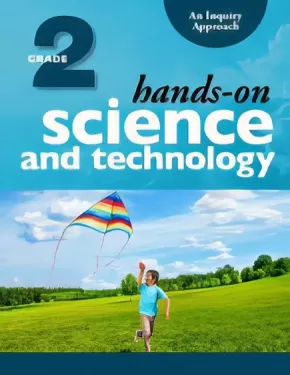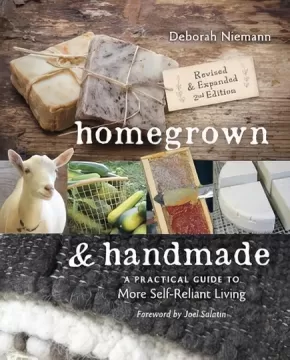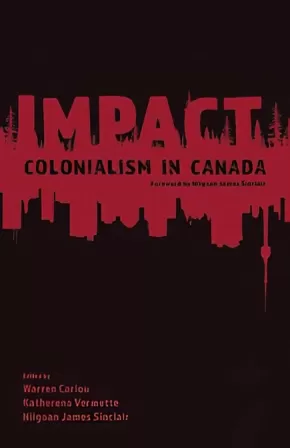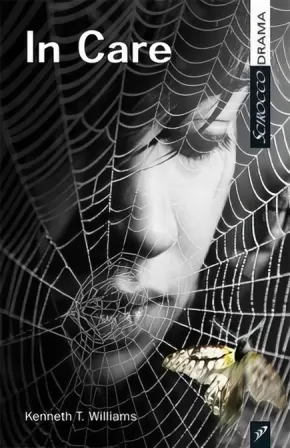
Browse Books for Adults
1321
-
1335
of
1940 Results;
Sort By
Go To
of 130
Daniel Paul: Mi'kmaw Elder
$19.95
Format:
Paperback
Text Content Territories:
Indigenous Canadian; First Nations; Mi'kmaq;
Grade Levels: University/College;
ISBN / Barcode: 9781988286044
Synopsis:
Synopsis:
Born in a log cabin during a raging blizzard on Indian Brook Reserve in 1938, Mi'kmaw elder Daniel N. Paul rose to the top of a Canadian society that denied his people's civilization. When he was named to the Order of Canada, his citation called him a "powerful and passionate advocate for social justice and the eradication of racial discrimination." His Order of Nova Scotia honour said he "gives a voice to his people by revealing a past that the standard histories have chosen to ignore."
But long before the acclaim, there was the Indian Agent denying food to his begging mother. There was the education system that taught him his people were savages. There was the Department of Indian Affairs that frustrated his work to bring justice to his people.
His landmark book We Were Not the Savages exposed the brutalities of the collision between European and Native American civilizations from a Mi'kmaq perspective. The book sold tens of thousands of copies around the world and inspired others to learn history from an indigenous point of view.
He shone a light on Halifax founder Edward Cornwallis through newspaper columns and public debates over two decades, calling on Nova Scotia to stop honouring the man whose scalping proclamations were an act of genocide against the Mi'kmaq.
Now, for the first time, here is the full story of his personal journey of transformation, a story that will inspire Canadians to recognize and respect their First Nations as equal and enlightened civilizations.
downstream: reimagining water
$36.99
Format:
Paperback
Text Content Territories:
Indigenous Canadian;
ISBN / Barcode: 9781771122139
Synopsis:
Synopsis:
downstream: reimagining water brings together artists, writers, scientists, scholars, environmentalists, and activists who understand that our shared human need for clean water is crucial to building peace and good relationships with one another and the planet. This book explores the key roles that culture, arts, and the humanities play in supporting healthy water-based ecology and provides local, global, and Indigenous perspectives on water that help to guide our societies in a time of global warming. The contributions range from practical to visionary, and each of the four sections closes with a poem to encourage personal freedom along with collective care.
This book contributes to the formation of an intergenerational, culturally inclusive, participatory water ethic. Such an ethic arises from intellectual courage, spiritual responsibilities, practical knowledge, and deep appreciation for human dependence on water for a meaningful quality of life. downstream illuminates how water teaches us interdependence with other humans and living creatures, both near and far.
Reviews
"Downstream stakes out a bold and creative claim to collaborative and cross-cultural eco-spiritual-neo-traditional knowing and, with it, new approaches to policy and action. A timely read that lends depth and resonance to some of the material and voices [in other books on the subject]." — Heather Menzies, Literary Review of Canada, June 2017
"This rich collection brings together the work of artists, writers, scientists, scholars, environmentalists, and activists, all focusing on the looming global water crisis. ... Writing styles vary from piece to piece throughout the book—poetic, personal, journalistic, and academic—but the shifts between each are well worth navigating for any reader interested in human futures on Earth."— Publishers Weekly, August 2017
"This collection of works successfully expands our knowledge of and experience with water by merging natural science, social science, arts, and humanities approaches to water. It offers new, innovative, and engaging ways to think about and experience water, especially as it relates to life and vitality."— Sara Beth Keough, American Review of Canadian Studies, November -0001
Educator Information
This collection of essays is useful for these course/subject areas or topics: Language Arts & Disciplines; Creative Writing; Indigenous Studies; Poetry; Environmental Studies; Environmental Humanities.
Table of Contents
Introduction: Re-storying Waters, Re-storying Relations / Rita Wong and Dorothy Christian
Part I: Contexts for Knowing and Unknowing Water
1. Planetary Distress Signals / Alanna Mitchell
2. Water / Lee Maracle
3. Interweaving Water: The Incremental Transformation of Sovereign Knowledge into Collaborative Knowledge / Michael D. Blackstock
4. Water and Knowledge / Astrida Neimanis
5. Excerpts from “a child’s fable” / Baco Ohama
Part II: Water Testimonies: Witness, Worry, and Work
6. Water: The First Foundation of Life / Mona Polacca
7. From Our Homelands to the Tar Sands / Melina Laboucan Massimo
8. Keepers of the Water: Nishnaabe-kwewag Speaking for the Water / Renee Elizabeth Mzinegiizhigo-kwe Bedard
9. Water Walk Pedagogy / Violet Caibaiosai
10. A Response to Pascua Lama / Cecilia Vicuna
Part III: Shared Ethical and Embodied Practices
11. Moving with Water: Relationship and Responsibilities / Alannah Young Leon and Denise Marie Nadeau
12. Bodies of Water: Meaning in Movement / Seonagh Odhiambo Horne
13. Upstream: A Conversation with Water / Cathy Stubington
14. Ice Receding, Books Reseeding / Basia Irland
15. Tsunami Chant / Wang Ping
Part IV: A Respectful Co-existence in Common: Water Perspectives
16. Listening to the Elders at the Keepers of the Water Gathering /Radha D’Souza
17. Coastal Waters in Distress from Excessive Nutrients / Paul J. Harrison
18. Bodies of Water: Asian Canadians In/Action with Water /Janey Lew
19. Permeable Toronto: A Hydro-Eutopia / Janine MacLeod
20. Saturate/Dissolve: Water for Itself, Un-Settler Responsibilities, and Radical Humility / Larissa Lai
21. Bring Me Back / Janet Rogers
Additional Information
300 pages | 6.00" x 9.00"
Emily Patterson: The Heroic Life of a Milltown Nurse
$21.95
Format:
Paperback
Text Content Territories:
Indigenous Canadian; First Nations; Nuu-chah-nulth (Nootka);
Grade Levels: University/College;
ISBN / Barcode: 9781553805052
Synopsis:
Synopsis:
When Emily Patterson arrives in the Pacific Northwest with her husband and children in 1862, she finds herself worlds away from Bath, Maine, the staunchly pious township of her birth. Up the remote reaches of Vancouver Island’s Alberni Canal, Emily learns much about self-reliance in a fledgling milltown where pioneer loggers and the native Tseshaht community share an often tempestuous co-existence. In search of their ideal homestead, the Pattersons next travel to Oregon’s fertile Willamette and Columbia River regions, confronting both joy and tragedy along the way. After many years, their quest finally leads them to Burrard Inlet, where the sawmilling communities of Hastings Mill and Moodyville duel for lumber supremacy. Emily gains wide recognition amidst the hard living mill workers for her extraordinary nursing skills, self-taught from sheer necessity over the course of her nomadic life. In a time when the nearest doctor is several hours of travel away, Emily is called upon day or night to deal with any medical situation, be it removing a splinter, treating a cough or preparing a body for burial.
Awards
2009 Kurd Lasswitz Prize winner
2013 Kurd Lasswitz Prize winner
2008 German Book Prize short-listed
Additional Information
312 pages | 6.00" x 9.00" | black and white photos throughout
Entangled Territorialities
$29.95
Editors:
Format:
Paperback
Text Content Territories:
Indigenous Australian; Indigenous Canadian;
Grade Levels: University/College;
ISBN / Barcode: 9781487521592
Synopsis:
Synopsis:
Entangled Territorialities offers vivid ethnographic examples of how Indigenous lands in Australia and Canada are tangled with governments, industries, and mainstream society. Most of the entangled lands to which Indigenous peoples are connected have been physically transformed and their ecological balance destroyed. Each chapter in this volume refers to specific circumstances in which Indigenous peoples have become intertwined with non-Aboriginal institutions and projects including the construction of hydroelectric dams and open mining pits. Long after the agents of resource extraction have abandoned these lands to their fate, Indigenous peoples will continue to claim ancestral ties and responsibilities that cannot be understood by agents of capitalism. The editors and contributors to this volume develop an anthropology of entanglement to further examine the larger debates about the vexed relationships between settlers and indigenous peoples over the meaning, knowledge, and management of traditionally-owned lands.
Essential Song: Three Decades of Northern Cree Music
$39.99
Format:
Paperback
Text Content Territories:
Indigenous Canadian; First Nations; Cree (Nehiyawak);
Grade Levels: University/College;
ISBN / Barcode: 9781554586134
Synopsis:
Synopsis:
Essential Song: Three Decades of Northern Cree Music, a study of subarctic Cree hunting songs, is the first detailed ethnomusicology of the northern Cree of Quebec and Manitoba. The result of more than two decades spent in the North learning from the Cree, Lynn Whidden’s account discusses the tradition of the hunting songs, their meanings and origins, and their importance to the hunt. She also examines women’s songs, and traces the impact of social change—including the introduction of hymns, Gospel tunes, and country music—on the song traditions of these communities.
The book also explores the introduction of powwow song into the subarctic and the Crees struggle to maintain their Aboriginal heritage—to find a kind of song that, like the hunting songs, can serve as a spiritual guide and force.
Including profiles of the hunters and their songs and accompanied (online) by original audio tracks of more than fifty Cree hunting songs, Essential Song makes an important contribution to ethnomusicology, social history, and Aboriginal studies.
Awards
- ForeWord Magazine Book of the Year Award, Bronze Pize, Music Category
Educator Information
Audio files available on Soundcloud: https://soundcloud.com/user-276681310/sets/essential-song-three-decades.
Additional Information
192 pages | 6.00" x 9.00"
Everyday Exposure: Indigenous Mobilization and Environmental Justice in Canada's Chemical Valley
$32.95
Format:
Paperback
Text Content Territories:
Indigenous Canadian; First Nations; Anishinaabeg; Ojibway;
ISBN / Barcode: 9780774832649
Synopsis:
Synopsis:
Surrounded by Canada’s densest concentration of chemical manufacturing plants, members of the Aamjiwnaang First Nation express concern about a declining male birth rate and high incidences of miscarriage, asthma, cancer, and cardiovascular illness. Everyday Exposure uncovers the systemic injustices they face as they fight for environmental justice. Exploring the problems that conflicting levels of jurisdiction pose for the creation of effective policy, analyzing clashes between Indigenous and scientific knowledge, and documenting the experiences of Aamjiwnaang residents as they navigate their toxic environment, this book argues that social and political change requires a transformative “sensing policy” approach, one that takes the voices of Indigenous citizens seriously.
Educator Information
This book would be useful for courses in Environmental Studies, Science, Social Justice, and Social Studies.
Additional Information
280 pages | 6.00" x 9.00"
Finding John Rae (1 in Stock)
$21.95
Format:
Paperback
Text Content Territories:
Indigenous Canadian; Inuit;
Grade Levels: University/College;
ISBN / Barcode: 9781553804819
Synopsis:
Synopsis:
John Rae was known as the “Arctic Fox” for his ability to trek vast distances in a short time across the Arctic. This creative nonfiction biography of the celebrated Arctic explorer begins in 1854 when, on a mapping expedition to the Boothia Peninsula, Rae discovers the missing link in the Northwest Passage and the fate of the missing Franklin Expedition — learning from Inuit hunters that Franklin’s ships had been beset by ice, and that the crew, starving in the cold, had resorted to cannibalism. When the Scottish-born scientist and Hudson’s Bay Company Chief Factor reports the details in private to the British Admiralty, his statement is secretly but deliberately released to the newspapers. Led by such well-known figures as Charles Dickens and Sir John Franklin’s widow, much of the population rises against Rae and his Inuit informants. Alice Jane Hamilton goes on to explore how Rae, through bitter disappointment and soaring hope, rebuilds his life, all the while defending the integrity of the Arctic natives who brought him the evidence of cannibalism.
Reviews
"Alice Jane Hamilton skilfully blends fact and fiction to breathe new life into the thrilling story of John Rae, the most successful, and yet least celebrated, Arctic explorer of the 19th century. " — Tom Muir, author of Orkney Folk Tales
“Finding John Rae brings one of the greatest, and most under-appreciated, 19th-century Arctic explorers vividly to life.” — John Wilson, author of Discovering the Arctic
Additional Information
228 pages | 9.00" x 6.00"
This book is creative nonfiction, a genre of writing that presents factually accurate narratives using literary style and technique (creativity).
From Oral to Written: A Celebration of Indigenous Literature in Canada, 1980-2010
$35.00
Format:
Paperback
Text Content Territories:
Indigenous Canadian;
ISBN / Barcode: 9781772011166
Synopsis:
Synopsis:
Aboriginal Canadians tell their own stories, about their own people, in their own voice, from their own perspective.
If as recently as forty years ago there was no recognizable body of work by Canadian writers, as recently as thirty years ago there was no Native literature in this country. Perhaps a few books had made a dent on the national consciousness: The Unjust Society by Harold Cardinal, Halfbreed by Maria Campbell, and the poetry of Pauline Johnson and even Louis Riel. Now, three decades later, Native people have a literature that paints them in colours that are psychologically complex and sophisticated. They have a literature that validates their existence, that gives them dignity, that tells them that they and their culture, their ideas, their languages, are important if not downright essential to the long-term survival of the planet.
Tomson Highway’s From Oral to Written is a study of Native literature published in Canada between 1980 and 2010, a catalogue of amazing books that sparked the embers of a dormant voice. In the early 1980s, that voice rose up to overcome the major obstacle Native people have as writers: they are not able to write in their own Native languages, but have to write in the languages of the colonizer, languages that simply cannot capture the magic of Native mythology, the wild insanity of Trickster thinking. From Oral to Written is the story of the Native literary tradition, written – in multiple Aboriginal languages, in French, and in English – by a brave, committed, hard-working, and inspired community of exceptional individuals – from the Haida Nation on Haida Gwaii to the Mi’kmaq of Nova Scotia’s Cape Breton Island.
Leading Aboriginal author Tomson Highway surveys the first wave of Native writers published in Canada, highlighting the most gifted authors and the best stories they have told, offering non-Native readers access to reconciliation and understanding, and at the same time engendering among Native readers pride in a stellar body of work.
Reviews
“We gratefully acknowledge the work of those artists who have come before, and those that continue, building bridges across our cultures through their authentic words. Tomson Highway’s readings each demonstrate that within our stories, we pass along our teachings and we build upon the strength inside each one of us. We are arriving. Back to our lands, back to our stories, back to our truths, unwrapping old words and sharing wisdom. We, are coming home.” —Terri Mack, Strong Nations
“A rich compilation of Indigenous literature that will be a gift for Canadian school curriculums, also well suited for those Canadians in search of understanding and reconciliation. More importantly this book is what Indigenous people need because, like me, they will discover their lives in the many stories. If I had this as a teenager, I would have understood that I was not alone in the darkness I lived. I would have seen that others found a way out. Bravo, Tomson Highway!” ―Bev Sellars, author of They Called Me Number One: Secrets and Survival at an Indian Residential School and Price Paid: The Fight for First Nations Survival
Educator Information
Recommended in the Canadian Indigenous Books for Schools 2019-2020 resource list as a Teacher Resource.
Additional Information
|
From the Tundra to the Trenches
$24.95
Editors:
Format:
Paperback
Text Content Territories:
Indigenous Canadian; Inuit;
ISBN / Barcode: 9780887558221
Synopsis:
Synopsis:
“My name is Weetaltuk; Eddy Weetaltuk. My Eskimo tag name is E9-422.” So begins From the "Tundra to the Trenches." Weetaltuk means “innocent eyes” in Inuktitut, but to the Canadian government, he was known as E9-422: E for Eskimo, 9 for his community, 422 to identify Eddy.
In 1951, Eddy decided to leave James Bay. Because Inuit weren’t allowed to leave the North, he changed his name and used this new identity to enlist in the Canadian Forces: Edward Weetaltuk, E9-422, became Eddy Vital, SC-17515, and headed off to fight in the Korean War. In 1967, after fifteen years in the Canadian Forces, Eddy returned home. He worked with Inuit youth struggling with drug and alcohol addiction, and, in 1974, started writing his life’s story. This compelling memoir traces an Inuk’s experiences of world travel and military service. Looking back on his life, Weetaltuk wanted to show young Inuit that they can do and be what they choose.
Reviews
“Endlessly interesting; an account of a traditional way of life now lost, a gripping first-hand account of a front-line soldier during the war, and an honest account of a young man’s adventures and misadventures. It is to all our benefit that it has, at last, found its way into print." — Michael Melgaard, The National Post
“Tender, honest, and often raw, Weetaltuk’s storytelling is masterful, engrossing, and deeply human. He has imbued his writing with a philosophical nuance that is characteristically Inuit: very subtle, yet profound." — Siku Allooloo, The Malahat Review
“Recounts the adventures of Inuk veteran Eddy Weetaltuk, from his early life in the North to his escape to the south under an assumed identity, to his enlistment in the Canadian Forces, which took him across the Canadian West, to Japan and Germany, and into battle in Korea. Adopting the name Eddy Vital was necessary in 1951 because the federal government restricted the movement of Inuit people. Through his alias, Weetaltuk was able to see the world; in the army, he experienced equality and respect – all the while never forgetting his true identity as an Inuk. The publication history of From the Tundra to the Trenches is itself a four-decades-long saga of many twists and turns. That it now finds English publication (after first appearing in French and German) owes to the author’s conviction that his life story be read as a work of literature with the makings of a bestseller. Eddy Weetaltuk was right.”— Jade Colbert, The Globe and Mail
“For those interested in Inuit culture it offers the rare and valuable perspective of an Inuk looking out from his culture at the world rather than the world looking in. “ — P. T. Sherrill, CHOICE
Educator & Series Information
From the Tundra to the Trenches is the fourth book in the First Voices, First Texts series, which publishes lost or underappreciated texts by Indigenous writers. This new English edition of Eddy Weetaltuk’s memoir includes a foreword and appendix by Thibault Martin and an introduction by Isabelle St-Amand.
Additional Information
280 pages | 5.50" x 8.50" | 25 colour illustrations, 3 b&w photographs, bibliography
full-metal indigiqueer
$18.95
Format:
Paperback
Text Content Territories:
Indigenous Canadian; First Nations; Anishinaabeg; Oji-Cree;
Grade Levels: 12; University/College;
ISBN / Barcode: 9781772011876
Synopsis:
Synopsis:
This poetry collections focuses on a hybridized Indigiqueer Trickster character named Zoa who brings together the organic (the protozoan) and the technologic (the binaric) in order to re-beautify and re-member queer Indigeneity. This Trickster is a Two-Spirit / Indigiqueer invention that resurges in the apocalypse to haunt, atrophy, and to reclaim. Following oral tradition (Ã la Iktomi, Nanaboozho, Wovoka), Zoa infects, invades, and becomes a virus to canonical and popular worksin order to re-centre Two-Spirit livelihoods. They dazzlingly and fiercely take on the likes of Edmund Spenser, Shakespeare, Charles Dickens, and John Milton while also not forgetting contemporary pop culture figures such as Lana Del Rey, Grindr, and Peter Pan. Zoa world-builds a fourth-dimension, lives in the cyber space, and survives in NDN-time – they have learned to sing the skin back onto their bodies and remain #woke at the end of the world. “Do not read me as a vanished ndn,” they ask, “read me as a ghastly one.”
full-metal indigiqueer is influenced by the works of Jordan Abel, Tanya Tagaq, Daniel Heath Justice, Claudia Rankine, Vivek Shraya, Qwo-Li Driskill, Leanne Simpson, Kent Monkman, and Donna Haraway. It is a project of resurgence for Two-Spirit / Indigiqueer folk who have been ghosted in policy, page, tradition, and hi/story – the very lives of Two-Spirit / Indigiqueer youth are rarely mentioned (and even dispossessed in our very mandates for reconciliation), our lives are precarious but they too are precious. We find ourselves made spectral in settler and neocolonial Indigenous nationalisms – if reconciliation is a means of “burying the hatchet,” Zoa seeks to unearth the bones buried with those hatched scalps and perform a séance to ghost dance Indigiqueerness into existence. Zoa world-destroys in order to world-build a new space – they care little for reconciliation but rather aim to reterroritorialize space in literature, pop culture, and oral storytelling. This project follows in the tradition of the aforementioned authors who, Whitehead believes, utilize deconstruction as a means of decolonization. This is a sex-positive project that tirelessly works to create coalition between those who have, as Haraway once noted, “been injured, profoundly.” Zoa stands in solidarity with all qpoc folk who exist as ghosts with intergenerational and colonial phantom pains – they sing with Donna Summer, RuPaul, Effie White, and Trixie Mattel. The space made is a post-apocalyptic hub of sex and decolonization – a world where making love is akin to making live.
Haida Eagle Treasures: Traditional Stories and Memories from a Teacher of the Tsath Lanas Clan
$24.95
Artists:
Format:
Paperback
Text Content Territories:
Indigenous Canadian; First Nations; Haida; Eagle Clan (Ts'aahl);
ISBN / Barcode: 9781550597486
Synopsis:
Synopsis:
Take a journey into the heart of Haida culture as it is lived and experienced by an extraordinary woman of the Tsath Lanas Eagle Clan. Pansy Collison, a Haida woman born and raised in Old Massett on Haida Gwaii, tells stories of her clan and community, as well as personal narratives about her history and family. Haida Eagle Treasures embodies a strong Haida woman’s voice, offering a rare glimpse inside Haida culture. Each story and memory is a treasure that captures part of the beauty of the Haida worldview and way of life.
Now retired, Pansy taught for 23 years at elementary, secondary, and college levels. From these experiences, she describes some of the challenges and contradictions of living between two worlds. Pansy’s teaching skills, artistic talents, and political affiliations keep her involved in politics and education on Haida Gwaii.
Thirteen original illustrations by Pansy’s brother, Paul White, a gifted artist, teacher, pole carver and designer, provide the guideposts within Haida Eagle Treasures.
Educator Information
Recommended in the Canadian Indigenous Books for Schools 2019-2020 resource list as being useful for grades 8-12 for English Language Arts and Social Studies.
Caution: use of the term "Native" throughout.
Additional Information
244 pages | 6.00" x 9.00" | 2nd Edition
Hands-On Science and Technology: An Inquiry Approach - Grade 2 (1 in stock)
$136.00
Format:
Coil Bound
Text Content Territories:
Indigenous Canadian;
Grade Levels: 2;
ISBN / Barcode: 9781553797074
Synopsis:
Synopsis:
Hands-On Science and Technology: An Inquiry Approach is filled with a year’s worth of classroom-tested activity-based lesson plans. The grade 2 book is divided into four units based on the current Ontario curriculum for science and technology:
- Growth and Changes in Animals
- Movement
- Properties of Liquids and Solids
- Air and Water in the Environment
This new edition includes many familiar great features for both teachers and students: curriculum correlation charts; background information on the science and technology topics; complete, easy-to-follow lesson plans; reproducible student materials; materials lists; and hands-on, student-centred activities.
Useful new features include:
- the components of an inquiry-based scientific and technological approach
- Indigenous knowledge and perspective embedded in lesson plans
- a four-part instructional process—activate, action, consolidate and debrief, and enhance
- an emphasis on technology, sustainability, and differentiated instruction
- a fully developed assessment plan that includes opportunities for assessment for, as, and of learning
- a focus on real-life technological problem solving
- learning centres that focus on multiple intelligences and universal design for learning (UDL)
- land-based learning activities
- a bank of science-related images
Educator& Series Information
This book is from the Hands-On Science: An Inquiry Approach (for Ontario) series.
Recommended for grade 2.
Includes some Indigenous content/perspectives from Indigenous Consultant Kevin Reed.
Additional Information
|
Homegrown & Handmade: A Practical Guide to More Self-Reliant Living - 2nd Edition
$39.99
Format:
Paperback
ISBN / Barcode: 9780865718463
Synopsis:
Synopsis:
Food recalls, dubious health claims, scary and shocking ingredients in health and beauty products. Our increasingly industrialized supply system is becoming more difficult to navigate, more frightening, and more frustrating, leaving us feeling stuck choosing in many cases between the lesser of several evils.
Author Deborah Niemann offers healthier, more empowering choices, by showing us how to reclaim links in our food and purchasing chains, to make choices that are healthier for our families, ourselves, and our planet.
In this fully updated and revised edition of Homegrown and Handmade, Deborah shows how making things from scratch and growing some of your own food can help you eliminate artificial ingredients from your diet, reduce your carbon footprint, and create a more authentic life.
Whether your goal is increasing your self-reliance or becoming a full-fledged homesteader, it's packed with answers and solutions to help you rediscover traditional skills, take control of your food from seed to plate, and much more.
This comprehensive guide to food and fiber from scratch proves that attitude and knowledge is more important than acreage. Written from the perspective of a successful, self-taught modern homesteader, this well-illustrated, practical, and accessible manual will appeal to anyone who dreams of a more empowered life.
Additional Information
336 pages | 7.50" x 9.00" | 2nd Edition
Impact: Colonialism in Canada
$12.00
Format:
Paperback
Text Content Territories:
Indigenous Canadian;
Grade Levels: 12; University/College;
ISBN / Barcode: 9781927849293
Synopsis:
Synopsis:
A collection of fiction, poetry, essays and creative non-fiction, this anthology features works by over 20 Indigenous Canadian writers. The book focuses on the effects of colonialism in Canada from both historical and contemporary perspectives.
"These stories are rich in geographies Indigenous peoples journey through today; on streets, in cities, and into the future. These stories will make you think, cry, and heal." —Niigaanwewidam James Sinclair, Editor
Reviews
"Impact: Colonialism in Canada presents writings that are often challenging, thought-provoking, and at times, gut-wrenching. The collection is a testament to strength and resiliency and the potential for healing, both within the Indigenous and non-Indigenous communities. But, it is not easy reading; it demands considerable insight, open-mindedness, and an understanding of an historical concept (i.e. colonialism), all of which point to the book’s being read and/or studied by students in the upper grades of high school. It’s certainly a work that would be a fine reference in a high school library collection, and teachers would find it to be an excellent supplemental text for the study of Aboriginal writers, as well as Canadian history, particularly as a reflection of the impact of colonialism upon Canada’s Indigenous peoples. Highly Recommended." - Joanne Peters, CM Magazine
Educator Information
Recommended for ages 17+
Additional Information
198 pages | 5.50" x 8.50"
In Care
$15.95
Format:
Paperback
Text Content Territories:
Indigenous Canadian;
ISBN / Barcode: 9781927922309
Synopsis:
Synopsis:
In Care is about a mother's quest to get her children out of foster care. Janice Fisher has not had an easy life. She worked the streets as a teenager, was addicted to cocaine, and had her first daughter taken from her when she was just 15. But she's since turned her life around, and is a good mother to three happy girls -- until a false accusation gets them apprehended by foster care. Now, Janice is trapped in the system like a butterfly in a spider's web: the more she struggles to get out, the more stuck she gets. In Care is both an indictment of the racism that's inherent in our system and a tribute to the strength people as disadvantaged as Janice must have in order to survive.
Educator Information
Recommended in the Canadian Indigenous Books for Schools 2019-2020 resource list as being useful for grades 10 to 12 for these subjects: Acting, Drama, English Language Arts, and Social Studies.
This work includes mature subject matter with references to drug use and prostitution.
Additional Information
96 pages | 5.50" x 8.50"
Sort By
Go To
of 130

